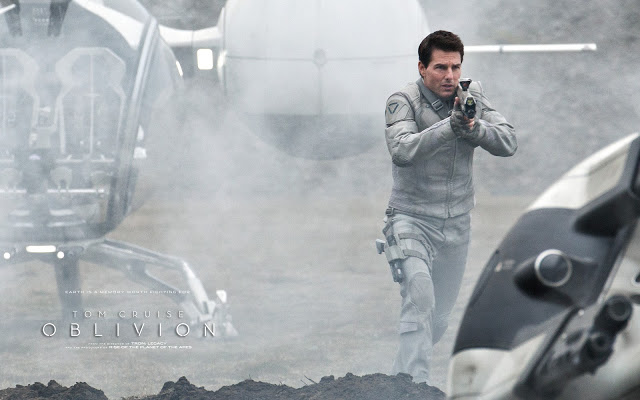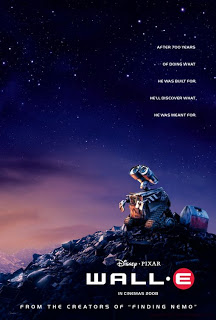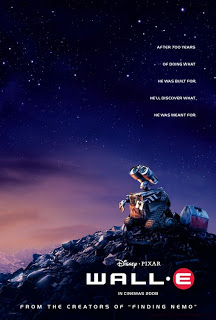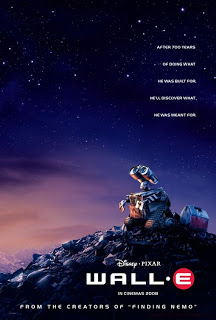 |
| Tom Cruise saving the day in Oblivion |
While some of the ideas could have been unique regarding the mystery and eventual climax of the film, for the most part it all feels very stock and trade. The whole movie is just watching Cruise go from one location to the next, kick someone’s ass, save someone, and have an inordinately pretty woman make love eyes at him. (Seriously, Cruise has to fly the jet, destroy the evil machines following them with his amazing skills, and shoot one-handed to pop off the ones that get too close, all while the female lead sits in the passenger seat looking scared and confused?) It feels flat and familiar and lacking in any kind of interaction with the other actors or scenery; it’s really a very static film with only one dynamic actor and everything else a fancy prop.
It’s a shame that the rest of the characters weren’t interesting, unique, or even had many lines. There were some great male actors in the film, specifically Coster-Waldau and Freeman who were sorely underused. Beyond that, their plot lines were unexplained and vague, lacking in development, explanation or screen time.
That’s not even the worst though; let’s consider the women of the film. The female characters were a type that I haven’t seen in a while, being so wholly lacking in personality that it was like watching a 70’s action movie. They were fairly helpless, dashingly clueless, often naked for no reason, and sent longing looks in Jack’s direction a lot—with ever-so-slightly-parted, lingerie model lips. Really, is it impossible to close your mouth when you’re in love?
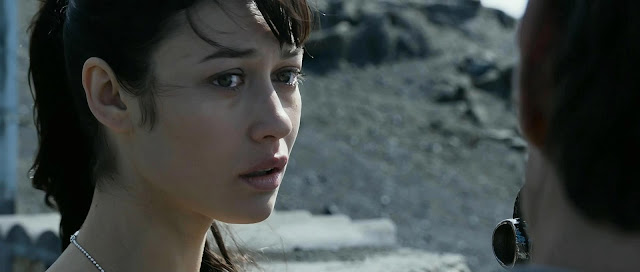 |
| Olga Kurylenko looks longingly at Tom Cruise in Oblivion |
I was actually surprised at how lackluster and generic the women were; lately it seems that Hollywood is at least trying to have one interesting woman in a film, but the lack of effort here was laughable. Again, EVE, the female robot in Wall-E was a thousand times more interesting and developed with a far more fascinating and distinct personality.
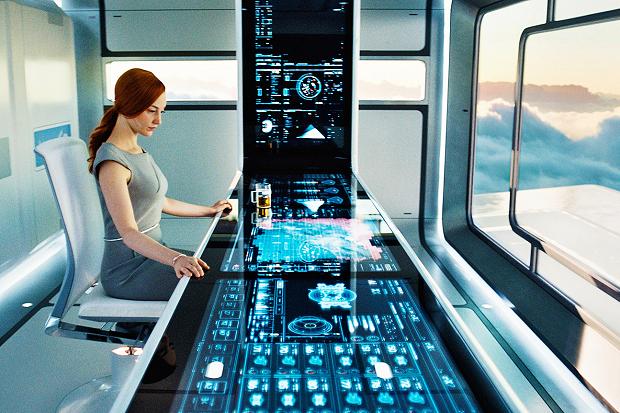 |
| Andrea Riseborough looking impeccably dull in Oblivion |
I just want to see something new: a less-sterile spaceship, some messed-up hair, maybe a square corner on a computer screen, hell I’d settle for a power cord. It’s just monotonous. Where is the vibrancy, the life, the touch of grit? Could there at least be one pair of ill-fitting jeans? How about some sense of relatable emotion like embarrassment, rejection, disappointment? What if the technology malfunctioned? Or the Macgyver-ing of the wires just didn’t work?
I don’t know, Hollywood; what if something new happened? Do what you haven’t done in a while and surprise me.
———-
Rachel Redfern has an MA in English literature, where she conducted research on modern American literature and film and its intersection; however, she spends most of her time watching HBO shows, traveling, and blogging and reading about feminism.
